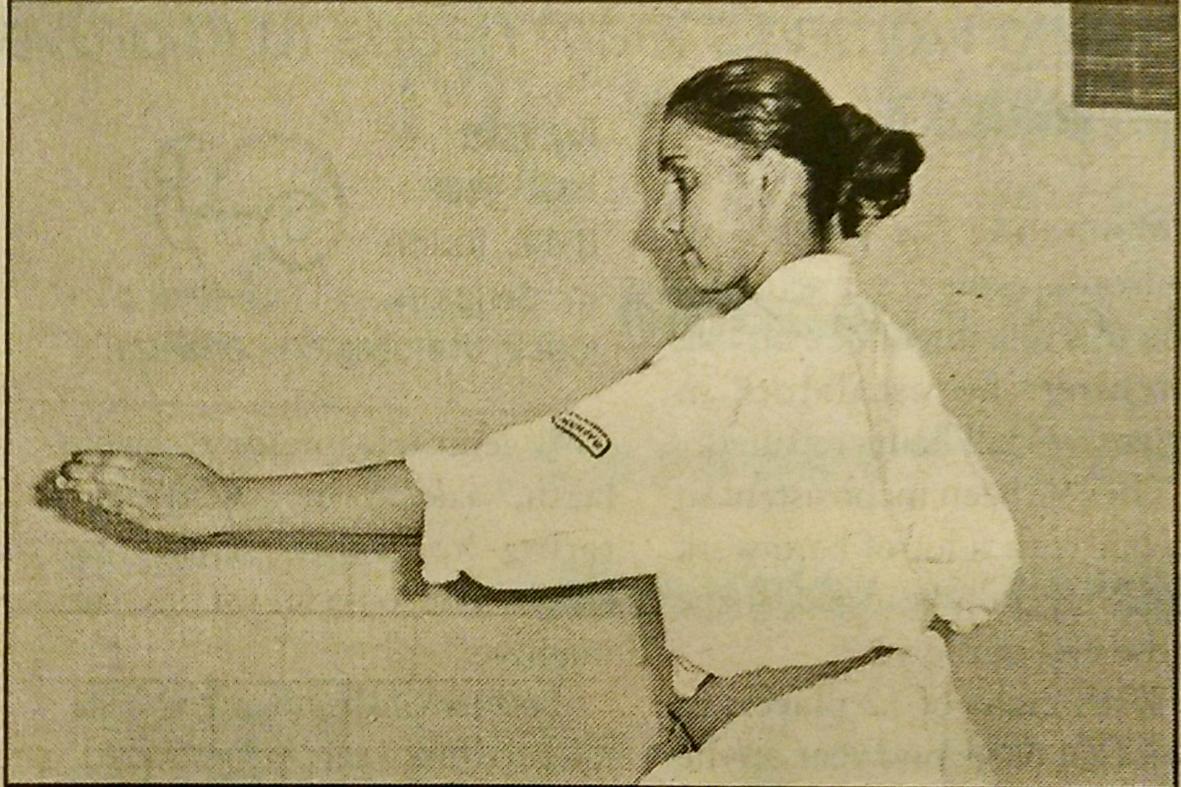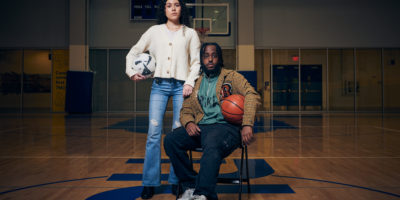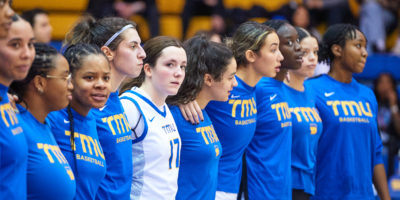By Tracey Tong
I was in the mood for some ass-kicking last week.
Imagine my disappointment when I attend a meeting of Ryerson’s Wado-Kai Karate Club and find it’s a non-contact club, meaning students fight without intent to injure.
Instructor — or sensei — Joel Cohen tells me the 29-year-old club, which operates in the lower gym of Kerr Hall, practices Wado-Ryu karate, which is Japanese for “peace and harmony.”
“Karate is rewarding, builds confidence, relieves stress and teaches you control and patience,” says Cohen, a fourth-degree black belt.
Sounds good. I’ll stick around.
Before class, members kneel on the cold, hard floor — left leg first — and bow to each other to show respect.
Sensei Peter Russel takes us through 20 minutes of stretching exercises and a series of cardio warm-ups. To finish the warm-up, we do some sparring drills called kata, where students fight imaginary opponents.
Now we’re ready to get started.
I know I won’t be paired with a muscular meathead, but I’m still nervous. Then Jen Sharpe, who has been practising with the club for three years, says to me, “anyone can do karate.”
Sheepishly, I tell her I’m a wimp and barely have the strength to carry a case of Coke home from the grocery store.
“You don’t have to be strong,” she says. “You just use your own body weight.”
Nazma Abraham, another long-time club member, calls karate “a science of the body.”
“It makes you very aware of all the things that the human body can do,” she says.
When I ask Abraham to describe her favourite move — a simple one that beginners can try at home without killing themselves — she demonstrates the front kick.
Start with your feet planted apart, one leg back as if you were about to take a step. Bring the back leg forward; as you do this tuck your heel up toward your butt and then swing your thigh up and extend your foot forward to meet where your opponent’s chest would be. “It’s just a straight kick,” she says. “No twisting you body off to one side.” The power from the kick should come from your hip, not your knee.
Okay karate kids: The weapon for this move is the ball of the foot. Before starting you should curl your toes back to avoid breaking them.
Now that I’ve learned how to kick, I ask Cohen to show me how to punch someone.
“When doing a front punch, you have to step into it,” the sensei of 22 years says. “Extend your arm so it goes straight out. Then you make contact with the target using your two biggest knuckles which are strongest bones in your hand,” he says, referring to the index and middle finger.
After I take a few flimsy jabs, Cohen corrects me. “Don’t swing your arms wildly out of control,” he says.
Later, I test out my new moves at home. I can do the punches okay, but I almost dislocate my spine trying the front kick. Oh well, learning karate takes time.
By the time auditions are held for the next Charlie’s Angels movie, I figure I’ll be ready.










Leave a Reply